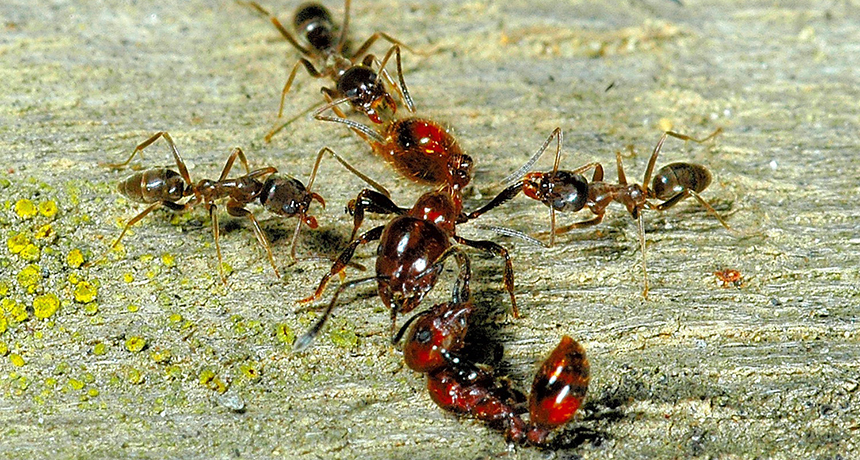Invading Argentine ants carry virus that attacks bees

ANT FIGHT Invasive Argentine ants, shown in a threesome attacking a native New Zealand ant, carry hitchhiking viruses, a new survey says.
Phil Lester

ANT FIGHT Invasive Argentine ants, shown in a threesome attacking a native New Zealand ant, carry hitchhiking viruses, a new survey says.
Phil Lester